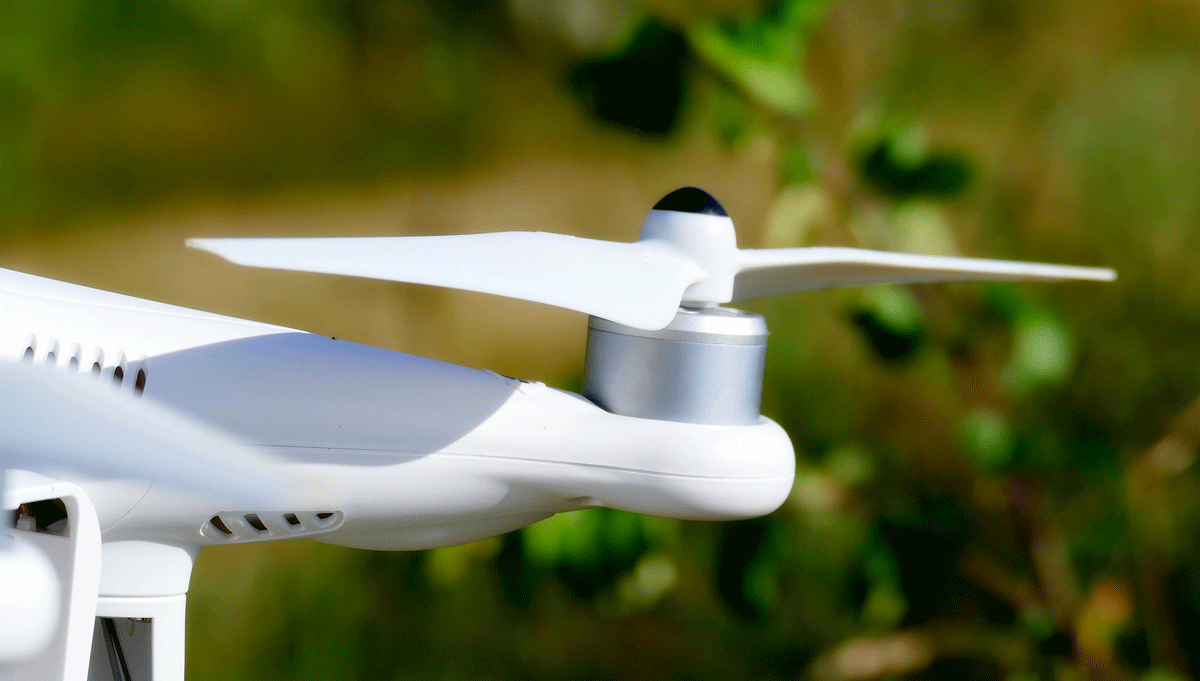In trying to figure out what topics were going to be of critical importance to commercial drone operators in 2017, insurance and risk kept coming up as major areas of interest. Many drone operators are uncertain about what it means to properly assess risk and establish insurance needs. These kind of shortcomings can lead to serious issues, especially as more professionals take to the sky under Part 107.

Chris Proudlove
To explore this topic from a very high level for a
report that focused on what drone operators could look forward to seeing in 2017, I was able to connect with Chris Proudlove, Senior Vice President at
Global Aerospace. The company is a leading provider of aircraft insurance and risk management solutions for the aviation and aerospace industries. Chris provided some great insight around how insurance policies deal with issues like privacy, damage and liability, but I wanted to explore these topics and issues even further.
In the interview below, Chris explains some of the common mistakes operators and stakeholders have when they try to assess risk. He also talks about how insurance preferences have changed, how to best prepare for accidents and plenty more. What's here is just a primer to what should be a much more detailed conversation at the 2017
Commercial UAV Expos Americas though, and anyone who has specific questions or issues that they’d like to see addressed at the event
should get in touch.
Jeremiah Karpowicz: One of the reasons I wanted to connect with you for our 2017 Predictions Report was because I know the insurance community has a unique perspective on the drone industry. Can you talk a little bit the high-level changes and developments that you’re seeing?Chris Proudlove: We are beginning to see more companies move from proof-of-concept to integration of drones. This has been most prevalent in industries that are focused on infrastructure inspections. Media and agriculture have been somewhat slower to adopt the technology, but this may have more to do with regulation and opportunity cost.
I was just rereading your Sky High Drone Growth Presents Challenges and Opportunities whitepaper, and one thing that struck me was the comment about a clear need for more traditional aviation companies and pilots to enter the drone market. What kind of challenges have you seen people on all sides of the industry run into when they don’t approach this technology from an aviation perspective?We have generally noticed that companies that approach the integration of drones from an aviation or military perspective have a more successful and effective integration. Those companies that believe they will achieve their desired goals by relying upon operators who do not have the appropriate experience or training, are using prosumer grade equipment and don’t have a well thought out plan in place, may find it ultimately takes them longer to achieve a satisfactory outcome from the use of drones.
What are some of the common mistakes operators and stakeholders make when they try to assess risk?There may be a tendency to underestimate the risks. There are exceptions, but we generally see larger companies take a far more pro-active approach to risk management. This is true for insurance purchase, too. In many cases, operators and start-ups are triggered to buy insurance, or to increase to a higher liability limit, when a contract requires it, they get purchased, or they secure a large investment. It is in the operator’s best interest to plan to implement risk mitigation that exceeds the requirements of Part 107.
Have you seen distinctions in terms of how different types of users think about or consider insurance? Do, for example, farmers think of drone insurance in a different way than utility professionals?Yes, and with good reason. While unforeseen incidents can occur in any commercial or recreational environment, the probability of a catastrophic accident occurring is far greater in circumstances where crowds of people or expensive infrastructure are present. This is due to both the proximity to those hazards as well as potential interference from them. Insurance premiums should reflect the difference in risk to make it easy for all users to purchase the appropriate protection.
Can you talk a little bit about the offering of General Liability (GL) carriers, and how they offerings can end up being more limited than an operator might expect?Some non-aviation General Liability insurers have developed language to provide protection. We have heard many industry professionals highlight drawbacks to these offerings, as there may be exclusionary language in the policy that would significantly limit protection.
Tell us about the specific policy forms you’ve developed to cover the particular needs of the drone market. What makes these offering distinct and different?There are many choices on the market today; all with their distinct benefits or drawbacks. At Global Aerospace, we have developed two significant products to date.
The first is an annual policy, written specifically with the commercial drone operator in mind, that covers damage to the drone, associated equipment as well as various liability hazards. This policy aims to provide broad protection for operators. We can endorse Personal Injury (covering Invasion of Privacy) and many other coverage items as well. This product is available online via affiliated specialist producers (brokers).
In addition, we have partnered with the team at Verifly to bring on-demand insurance purchased through a smart phone app. This product allows for greater flexibility, but it is limited to liability coverage only.
Have preferences around the type of insurance operators want changed? I imagine changes in preferences ties into trends like on-demand converge, correct?Yes, you are correct. It has become clear to us that access to flexible insurance products is important to drone operators. The insurance market is increasing implementation of use-based insurance offerings. Insurers will continue to develop products that meet the changing preferences of their customers. This kind of flexibility will be particularly important given the way drone operators move from one contract to another. They may require different limits of liability coverage as well as changing payload and equipment.
Does pricing and coverage tie into these kinds of trends as well? In what ways do pricing, coverage and preferences all feed into and impact one another?There is a tradeoff, for sure. Flexibility comes at a price. Although, for many operators the benefits far outweigh the drawbacks. We often hear that insurance is a cost that operators are able to include as part of the contract price. Being able to identify the exact insurance cost for a contract becomes very powerful. It is too early to identify significant insurance trends, but we are likely to see more options being developed as the industry grows.
Let’s talk about the reason everyone ultimately gets insurance: accidents. How can and should operators and stakeholders prepare themselves for these situations?The main thing operators should do is to have a plan in place. If your drone hits a power line or impacts a third party, the last thing you want is for management to be unaware of the proper course of action. Global Aerospace offers a Guide to Emergency Response to all our customers. Our customers can use this guide to develop their own specific plan. Preparation is the name of the game!
What can you tell us about new technology and accident rates?It is too early to have established any significant findings. What I can say, is that automation is preferable to manual operation. While many fully autonomous systems have suffered operational failures, the general picture is that the technology works!
Have you encountered different perspectives related to insurance when pursued by service providers versus an organization that is starting their own drone program?Generally speaking, the companies that are integrating drones into their existing business are well established and risk focused. As a result, most of these organizations tend to be more cautious. Also, they typically have the budget to be able to afford a significant insurance policy. In comparison, some start-ups may see insurance as a low priority.
What advice would you have for an operator or stakeholder that wants to get a better sense of what they need to do to properly assess risk and insurance? Is there a good place to start, or a specific way to approach this topic?There are certainly some professional organizations who can offer advice in this area. One example is the Unmanned Safety Institute. Alternatively, many operators have successfully and safely integrated drones into their enterprises by training, planning and using many of the available software tools available today.
What are some of the most pressing issues you’re dealing with when it comes to risk and insurance? Get in touch with Commercial UAV News and Global Aerospace to let us know what questions and issues you’re looking to see addressed and discussed in future articles and at the Commercial UAV Expo. 
















Comments